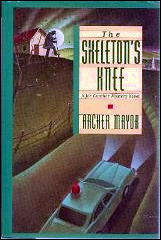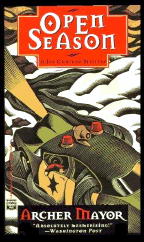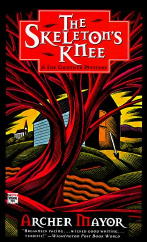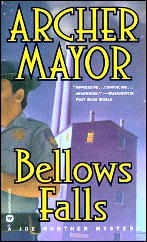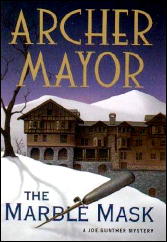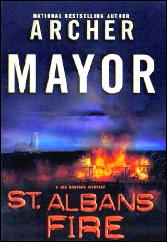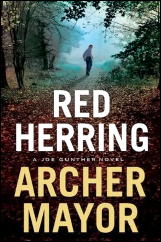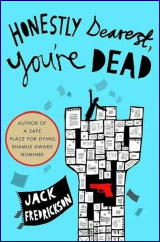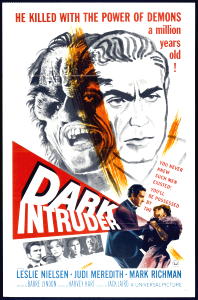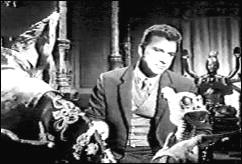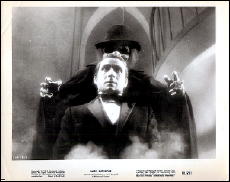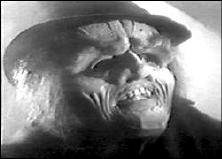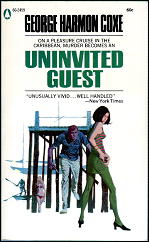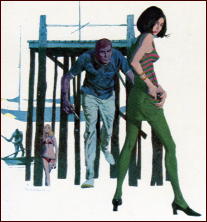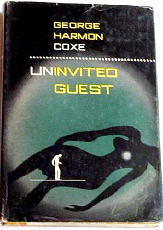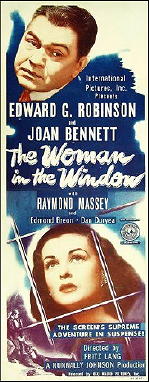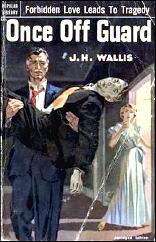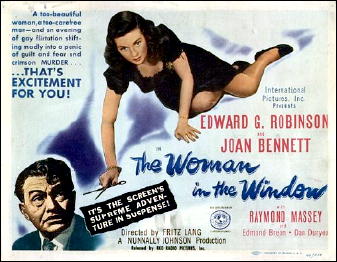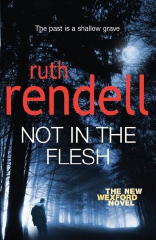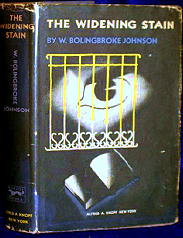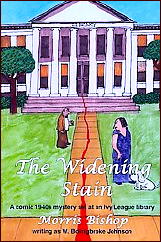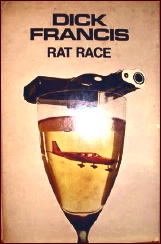BEN BENSON – The Blonde in Black. Bantam #1974, paperback reprint; 1st printing, July 1959. Hardcover: M. S. Mill; first edition, February 1958.
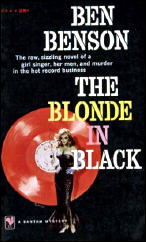
When the subject of police procedurals comes up, and which authors were among the first, Lawrence Treat and his novel V for Victim (1945) is often cited as the first of those in the modern era.
There were, of course, any number of candidates in the 1930s and even before. The idea of police solving crimes is a natural, after all; private eyes and purely amateur sleuths can’t have all the fun.
Ben Benson, whose books in softcover I’ve owned for many years (there were 19 of them and this is, alas, only the second one I’ve read) has somehow become neglected as one of the early authors in the field.
His first book, Alibi at Dusk, came along in 1951, for example, and there were not many other authors who might fit into the category between Treat’s books and his. As a minor quibble, if you were to look closely at The Blonde in Black, you might say that it does not really fit the category — if the category consists of a police department at work upon several unrelated crimes at the same time.
But if a police procedural can also consist of several members of a police department working as a team, following professional guidelines and conducting a case coolly and intelligently, then The Blonde in Black does indeed qualify, and presumably so do all of Benson’s other books.
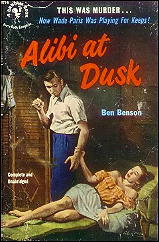
The blonde in question is Junie Jacques, whose image as a sexy singer has been built as a gigantic case of fraud by her record company. She’s in reality a home town girl from Massachusetts who needed the money and agreed mostly against her will to go along with the image the public knows her by.
And when she tells her record company executive that she’s quitting to get married, to the nephew of the governor, he’s fit to be tied. He’s also very quickly dead, with the D.A.’s office ready to arrest Junie for his death, which she claims to have been only a shooting accident.
Captain Wade Paris of the Massachusetts State Police is not so sure of Junie’s guilt, and he continues his investigation anyway, regardless of what the ambitious fellow from the D.A.’s office might think.
In one sense, this is an impossible crime, since Junie’s warning shot against what she thought was an intruder was in the air and toward the figure coming toward her, and as it turns out, the man was shot in the back. But the shot came from her gun, and only one shot was fired.
A fact which may sound insurmountable, but it’s easily enough solved. (It didn’t take me much time to figure it out, in other words.) Most of the book is taken up, in documentary fashion, with the ins and outs of the music business as it was in the 50s, in what it took to create an image the public would go for; payola to grease the palms of important disk jockey’s; the expectation that girl singers would do whatever it took to get ahead; and so on.
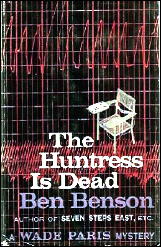
Benson’s a bit stodgy in the details here, nor does he see a lot to rock-and-roll singing beside the well-planned gyrations on stage, but his policemen, while largely faceless, do know their business. And on the other hand, while the case is a slight one, the other characters involved are real enough to have convinced me.
Ben Benson died young, in 1959, at the age of only 44, and I don’t know any details. His 19 books were written in a span of less than ten years, the last, The Huntress Is Dead (1960), being published after his death, and was never published in softcover.
Wade Paris was in ten of his novels; a Massachusetts state trooper named Ralph Lindsey was in another seven. There do not appear to have been any crossovers, but I’d love to be corrected about this. The other two books Ben Benson wrote consisted of one standalone novel and a collection of two novelettes. (Thanks to Roger Ljung, whose comment made an essential correction to this statement.)
[UPDATE] Later the same day. I have discovered one source online that says this about Benson:
“[He] was born in Boston and seriously wounded during Army service in WW2. He began writing as therapy…” A complete list of Benson’s novels can also be found on this site.
[UPDATE #2] 07-01-10. I recently received the following email from Victor Berch, with a cc sent to Al Hubin. The updated information about Benson will appear in the next installment of the online Addenda to the Revised Crime Fiction IV.
Hi Steve:
I became interested in your review of Ben[jamin] Benson’s books and since he was a Boston boy, I decided to check on his vital statistics. I know Contemporary Authors and other sources assign a 1915 birth date to him. However, according to the Massachusetts Vital Records, 1911-1915, there was no Benjamin Benson born in 1915.
What little data that is presented in Contemporary Authors reveals that Benson had enlisted in the US Army in 1943. So, I decided to check out any statistics that might appear in his Army record. Sure enough, his record was available.
It stated that he had enlisted in Boston on Sept. 24, 1943 as a private for the duration of the war (his Army serial number was 31422170, should anyone care to explore his record further). His year of birth was given as 1913, had two years of college education and his civilian occupation was given as a salesman.
Armed with that 1913 birth date, I went back to the Massachusetts Vital Records, 1911-1915. And his record was available. The data revealed that Benjamin Benson II had been born in Boston June 14, 1913, the son of Hyman D., a printer, and Rivka [Rebecca] (Charmonsky) Benson, both immigrants from Russia.
Whatever the family name originally was would have to be obtained from his father’s naturalization papers. His family had only immigrated to the US in 1912.
Best,
Victor
